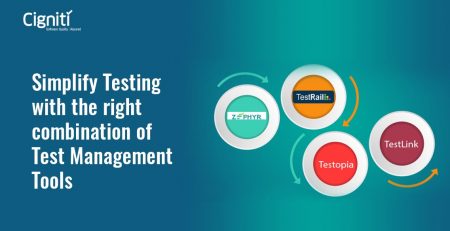5 Worst Ways of Managing Your Test Environment
The numerous components and the complexity of required configuration to set up a well-designed test environment need a thorough and effective test environment management strategy in place. Not having one can lead to absolute chaos during the testing phase of a software development lifecycle, thus, affecting the efficiency and viability of the test results.
As testing approach varies with each code requirement, a standard test environment does not hold ground strongly. It is critical that a test environment is customized based on the requirements of the particular code under analysis. Designing, configuring, and setting up a test environment is a tricky game, more so due to the number of variables involved. This calls for employment of a robust test environment management strategy and a skilled test environment manager to implement it.
Test Environment Management (TEM) is considered among the top 7 challenges in application development and deployment. While test environment is a platform setup comprising of the needed software and hardware, configured as per the desired specifications for a particular test, test environment management involves overseeing this arrangement to ensure that a test is run smoothly.
Typically, a test environment may involve a software that needs to be tested, an operating system to run the test, a testing server and database, configured test data, configured network connectivity, hardware devices, test framework tools and automation tools, third party software, interfaces between systems and applications, simulators, necessary documents such as user manuals and licenses, etc.
A test environment facilitates end-to-end visibility into a testing cycle, while aligning all the involved components into order to yield the desired test output. To orchestrate the level of seamlessness vital for a robust test environment, Test Environment Management is critical. Setting up a test environment is an expensive affair. However, an efficacious TEM strategy can significantly bring down the testing costs, while delivering higher ROI.
Although, the road to successful test environment management is not free from obstacles, the destination is certainly worth those roadblocks. Let us try to understand the worst practices for test environment management that one must avoid:
Designing a Test Environment with Ambiguous Requirements:
Designing a test environment without first understanding the requirements will lead to a serious gap between what was needed and what is delivered. If the test environment manager does not have clarity on what they are expected to build and deploy, they might end up serving oranges to someone who wanted avocados.
A test environment misaligned with the requirements may have a different set of configurations, hardware, software, and servers than what was necessary to perform a given test. This misalignment will not only cause the test to fail but will also result in further increase in the testing budgets as well as expensive delay in the delivery schedule.
Testing in an Environment that Varies a lot from Production Environment
The different types of test environment, used for various levels of testing, are – development environment, testing/QA environment, staging environment, and production environment.
Development environment is essentially used by the developers themselves to perform unit testing on the codes they write before passing them on to the next stage. Testing/QA environment is where regression testing is conducted to ensure that the new feature addition does not affect the existing ones. This environment is also used to perform other functional and non-functional testing, as required.
Staging environment is a mirror reflection of the production environment. The staging test environment is as close as the live environment as possible. It, therefore, helps the testers to determine an application’s actual behavior after deployment. The staging environment facilitates detection of maximum defects and prevents defect leakage into production.
When a software application is tested under an environment which varies a lot from the production environment, there might be substantial discrepancy in the how the application performs at the time of testing from how it performs after deployment.
Not Maintaining a Central Knowledge Repository
Centralization of test environment management takes care of two things – ownership and team alignment. A lack of centralized knowledge repository results in knowledge holes about the manual changes done to any test environment setup. These gaps can prove expensive and cause inefficiencies during test runs.
The test resources are dynamically allocated and may change with time. If there is no knowledge base created by the previous test environment resources, the succeeding resources might find themselves treading on a risky path with no information on what the course entails.
When a single source of requirements and changes is established, the entire test environment team can be on the same page regarding the recent updates and changes. Additionally, a central knowledge repository lowers release risks, while offering an end-to-end visibility into real-time actions related to a test environment.
Not Sanitizing the Production Data for Testing
Using the production data as is for testing is a huge gamble to take. Having said that the testing environment needs to mimic the production environment as closely as possible, it is not advisable to use the production data for testing. Despite the fact that the production data will yield quick and accurate results as compared to synthetic data, using it for testing is too big a risk to take.
Since the application under test is still not free from defects and vulnerabilities, unsanitized or unmasked data may become prey to undetected vulnerabilities. In case of a security breach that often targets test environment vulnerabilities, the unmasked data will be leaked into the hands of notorious elements. On the other hand, if the data is sanitized and crypted, hackers will have no use of it, rendering the breach unfruitful for them.
Not Automating Test Environment Deployment
As a common practice, test environments are built manually from scratch, which is highly expensive and time-consuming. An automation framework for test environment can institute a sustainable way of provisioning environments as and when required. Moreover, when test environment planning, design, and build provisioning is automated, test environment management becomes cost-effective and faster. Automated test environment management employs smaller assets to support test projects and enables recycling of test environments.
are configured automatically within a test environment, thus, ensuring consistency and accuracy. When manual interventions are eliminated with automation, time to market is reduced and so are manual errors, discrepancies, and delays.
Conclusion
Test Environment Management supports a software development life cycle in producing impeccable, defect-free applications by providing efficient, stable, and agile test environment setups. Maintaining, controlling, and supervising multiple software and hardware components, configuration settings, servers, remote operations, and test resources require an unhazed vision and clarity in objectives.
With Cigniti’s extensive expertise, you could Improve test effectiveness by using accurate test data, institutionalize test environment and test data management process, implement test data creation and simulation, automate test data management & protect data sensitivity. Connect with us today.





Leave a Reply